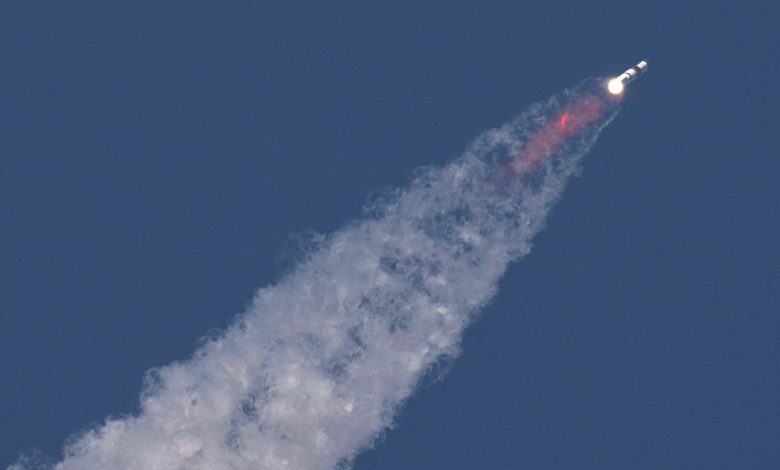SpaceX’s Starship Explodes Over Indian Ocean in Latest Test Failure

SpaceX Test Flight Update: Elon Musk’s aerospace company conducted another trial run of its massive Starship rocket on Tuesday, marking the third attempt after two previous unsuccessful missions. The latest demonstration also concluded unsuccessfully within minutes of launch.
The spacecraft departed from SpaceX’s Starbase facility in Texas on Tuesday evening for its ninth demonstration flight, drawing spectators from across the state to observe the launch. However, the 403-foot vehicle soon lost stability and partially detonated during flight.
The mission plan called for deploying dummy satellites after takeoff, but this objective failed when cargo bay doors wouldn’t fully open. Subsequently, the vehicle began rotating uncontrollably as it traveled through space toward an unplanned descent into the Indian Ocean.
SpaceX subsequently acknowledged that the spacecraft underwent what they termed “a rapid unscheduled disassembly,” meaning it broke apart mid-flight.
“Teams will continue to review data and work toward our next flight test,” the company stated in a digital announcement.
SpaceX Response
Tuesday’s test configuration combined Starship’s upper stage with its Super Heavy Booster system. Following the mission’s termination, SpaceX commented: “First reflight of a Super Heavy booster! Today’s test objectives were designed to intentionally push Super Heavy to the limits, giving us real-world data about its performance that will directly feed in to making the next generation booster even more capable.”
The company added: “As if the flight test was not exciting enough, Starship experienced a rapid unscheduled disassembly. Teams will continue to review data and work toward our next flight test. With a test like this, success comes from what we learn, and today’s test will help us improve Starship’s reliability as SpaceX seeks to make life multiplanetary.”
SpaceX commentator Dan Huot explained that the company lost directional control of the rocket during flight. According to Bloomberg’s reporting, Huot attributed the control loss to fluid leaks detected on the spacecraft.
“We have been dealing with some leaks on the ship…This is also what led to that loss of attitude control,” Huot stated.
(inputs from AP and Bloomberg)




